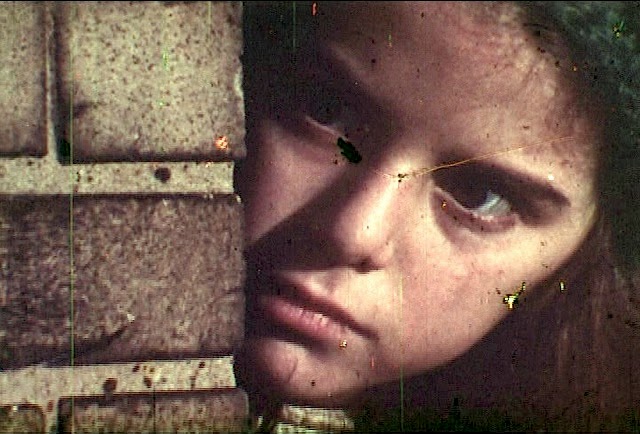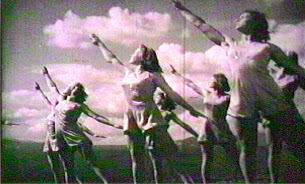Amelia and the Angel (B+W, 1957, Ken Russell)
An utterly charming early short from one of Britain's most iconoclastic directors, the late great Ken Russell (Tommy, Women in Love, The Devils). The almost too adorable Amelia (played by Argentinian moppet Mercedes Quadros) is getting ready for her stage debut as an angel with her dance class. Against the teacher's advice, she steals her wings to take home to show her mother. But, as her brother is a "horrible little beast", he absconds with the wings and destroys them summarily. Amelia must run all over the city to find a new pair of wings before her performance. She runs into obstacles and colorful characters aplenty (including an equally adorable circus dog) in her quest to redeem herself. While markedly more tame than Russell's work from the 70s and 80s, it is clearly his own with echoes of the themes of the absurdities of faith and a theatricality that would persist through most of his work. Ethereal, entertaining and inspiring, it's a rare treat from a Master, just unearthed from the archive.

This film showcases an extended performance by an all-female team of rhythmic gymnasts from Sweden, whose hypnotizing feats are impossibly synchronized. The precise movements of the girls create clean-cut lines of motion, generating spectacular images within the frame. However, such exercises had aims beyond the aesthetic, as schools incorporated gymnastics into their curriculums as an attempt to cultivate a united regime of physical and mental hygiene.
Double-Talk Girl (1942), A Universal Pictures “Popular Person Oddity” with Shirley Dinsdale and her right-hand gal, Judy Splinters. There’s nothing more unsettling than ventriloquism. Except for little girls in lace dresses doing ventriloquism. Really, it’s too much. In this wacko newsreel of the bizarre, it’s Lizzy Borden meets Chuckie as we meet a girl who may be the youngest serial killing, doll-loving supernatural psycho ever. Or she’s just good at throwing her voice and has bad taste in hobbies.
A Walt D*sney Production, The Story of Menstruation is an animated short film produced for American schools detailing the menstrual cycle. Rumored to be the first film with the word “vagina” in it’s screenplay, this vintage gem is both matter of fact and dreamily flowery. A large-headed girl takes you through the dos and don’ts of menses while helpful diagrams guide us all to better understanding.



